Iranian Caviar | Iran's Black Pearl
For millennia, people have cherished the luxurious delicacy known as Caviar, which refers to the salt-cured eggs from the enigmatic sturgeon fish.
While 27 sturgeon species have been discovered worldwide, Iranian Caviar from the Caspian Sea stands as the best Caviar in the world. In this article, we will discuss everything you need to know about Caviar, including the history of Caviar in Iran, its unique characteristics, and why it is one of the world's finest and most luxurious foods.
What is Caviar?
Caviar, derived from the Persian term "khag-avar," meaning "the roe generator," is a delicacy that consists of salt-cured eggs from the elusive sturgeon fish. This extravagant indulgence has a rich history spanning centuries, originating in ancient Persia and Russia. It was initially reserved for the privileged class, including royalty and nobility, but now it has become more accessible. Caviar has a unique and exquisite taste, often described as buttery, briny, and slightly nutty. It is typically enjoyed as a garnish or topping, adding a touch of luxury to dishes.
| Read more: Persian Food - Taste the Best, Forget the Rest
History of Iranian Caviar
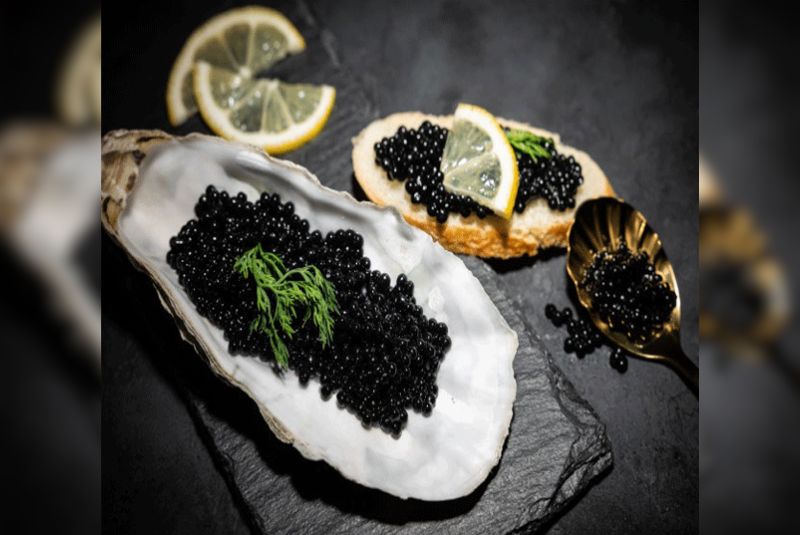
The history of Iranian Caviar is fascinating and stretches back to ancient times. While the details may be shrouded in mystery, historical records trace its existence back to the 4th century B.C. The ancient people of the Persian Empire were among the first to relish Caviar, attributing medicinal properties and an energy source to this esteemed delicacy—a belief that persists today.
During the time of the Persian Empire, Caviar was a valuable export and took advantage of the abundant sturgeon populations in the region. It became a constant source of cash flow and regional identity.
In later eras, Caviar gained popularity among high-class members of Roman society and was famously consumed by the Czars of Old Russia. This transition elevated Caviar from an everyday item to a certified luxury.
In modern times, Iranian Caviar can be found in the northern provinces of Gilan, Mazandaran, and Golestan, which neighbors the Caspian Sea. These regions provide a favorable environment for various sturgeon species, including the beluga sturgeon, known for its bottom-dwelling behavior. The icy, brackish waters of the Caspian Sea impart a distinct flavor to the Caviar. Remarkably, the beluga sturgeon exhibits incredible survival instincts, boasting lifespans of up to 100 years and attaining maturity around 20 years. The finest quality caviar, renowned as the "Iranian diamond," is derived from this particular species.
| Related: Top 17 Iranian Seafood Cuisine
Types of Persian Caviar
When it comes to Persian Caviar, several remarkable varieties have captivated people's fascination for centuries.
Beluga Caviar
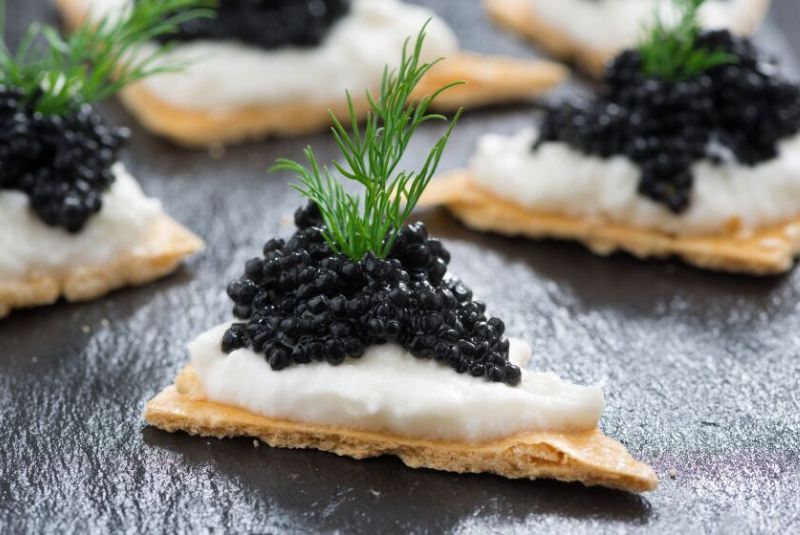
Beluga caviar stands out as one of the most coveted types globally. Derived from the elusive Beluga sturgeon (Huso Huso), this massive fish can reach lengths of up to 30 feet and carry up to 100 pounds of roe. The large, pea-sized pearls of Beluga caviar boast a delicate, buttery flavor with a remarkably long finish. Due to the species' endangered status and the challenges of farming, Iranian Beluga caviar is very rare to find, making it a prized find.
Ossetra Caviar
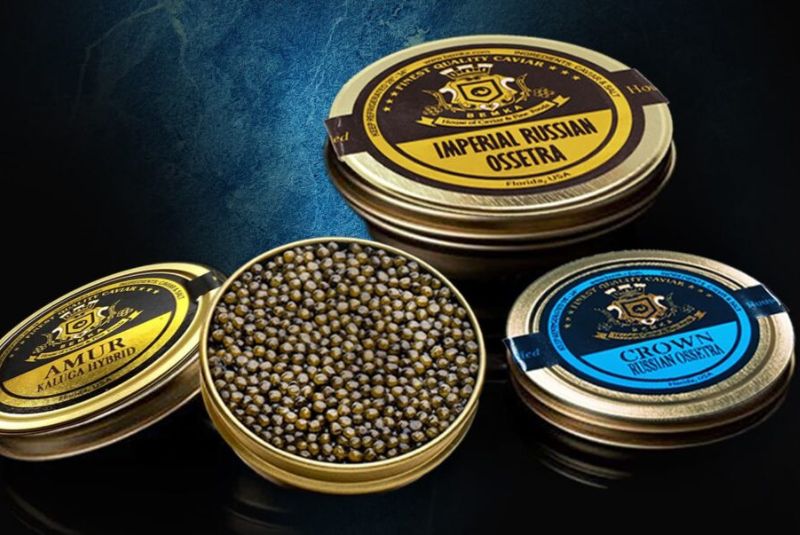
Another exceptional Persian caviar is Ossetra caviar, which is sourced from the Diamond sturgeon or Acipenser Gueldenstaedtii. This species can weigh over 250 pounds and is critically endangered. Ossetra pearls are slightly smaller than Beluga, but they impress with their buttery and nut-based flavor profiles.
Sevruga Caviar
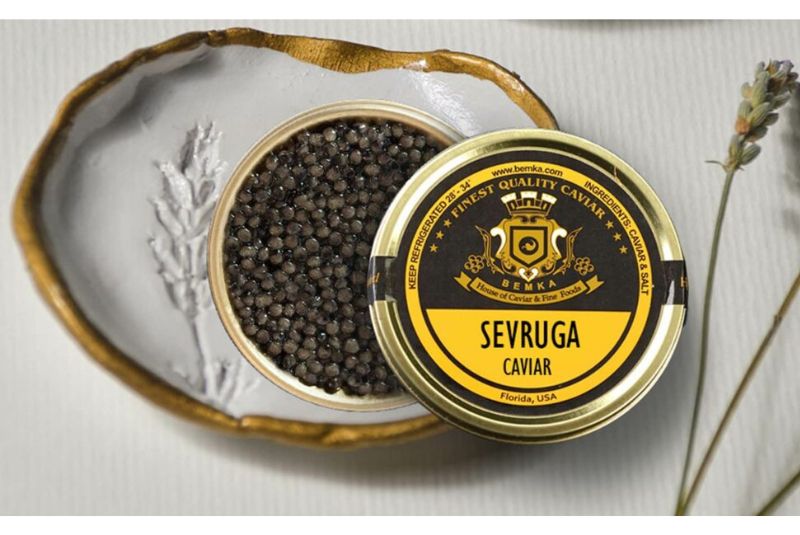
Sevruga caviar, originating from the Sevruga sturgeon (Acipenser Stellatus), offers a flavor profile comparable to Ossetra caviar but at a more affordable price point. The Sevruga sturgeon is smaller and less endangered, producing smaller grey eggs that still deliver a delightful taste. This Caviar can be found in the rivers north of the Caspian, extending into central Europe.
| Suggestion: Unusual Foods in Iran - Weirdly Wonderful Dishes
Almas Caviar

Almas caviar, a subset of Beluga caviar, is a rare golden variety obtained from albino sturgeon aged between 60 and 100 years old. With an average price of $25,000 per kilogram, Almas is the most expensive Caviar in the world. Its eggs are renowned for their rich, creamy flavor and intense nuttiness. While Almas caviar may remain a distant luxury for most, it serves as an object of admiration and a wish-list item for connoisseurs.
How is Iranian Caviar Harvested?
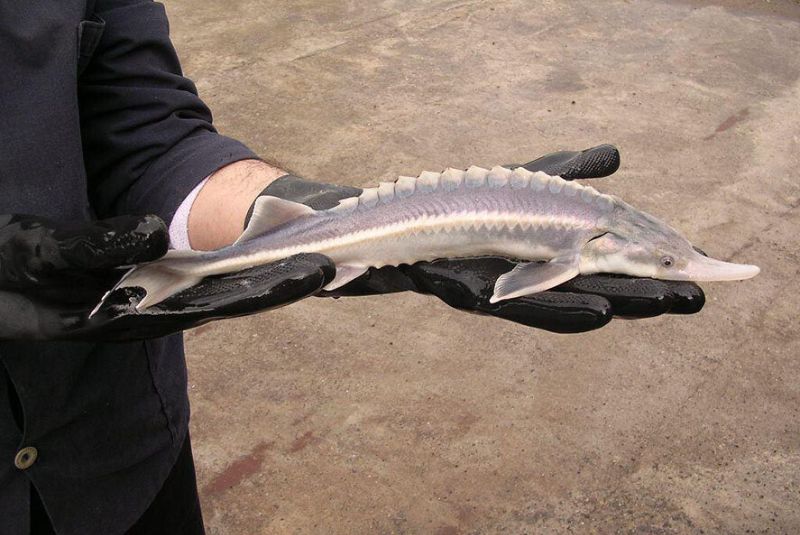
In the past, the methods for obtaining Caviar were, to say the least, unconventional. They use a rubber mallet to sedate the sturgeon and prevent any tail movement. The Caviar was then extracted, while the rest of the fish was sold as meat. However, as the sturgeon population faced a decline, a paradigm shift occurred, leading to the adoption of more sustainable practices.
In modern times, the extraction process has undergone a remarkable transformation. The eggs are delicately removed from the sturgeon's belly through a cesarean operation, ensuring the safety of both the fish and its precious roe. To secure the future of these magnificent creatures, some eggs are thoughtfully left in the fish's belly for future spawning. The sturgeon then undergoes a three-month quarantine period in specialized pools, allowing them to recover and replenish their strength.
After the quarantine period, the sturgeon is carefully marked and returned to the sea. Astonishingly, this process can be repeated up to six times for each fish.
| Read more: All About Persian Saffron - The Best in the Whole World
How is Iranian Caviar Served?

Persian Caviar, renowned as the pinnacle of luxury breakfasts, offers a multitude of serving options. Raw consumption is popular among caviar enthusiasts, while others prefer it accompanied by egg yolk or finely chopped onion. It can also be used as a food seasoning, served as an appetizer, or incorporated alongside or mixed with other dishes. Many individuals enjoy Caviar served cold, sans bread.
It's essential to note that Caviar should be enjoyed without the addition of any spices. Although, in the past, Caviar's perishable nature necessitated immediate preservation measures. Salt was traditionally added to freshly caught Caviar to prevent spoilage. However, advancements in food preservation techniques have introduced alternative methods, such as freezing or the use of preservatives. These developments have led to the production of low-salt Caviar, a popular choice among many consumers.
| Read more: Persian Tea - A Warm and Flavorful Journey
The Main Areas of Caviar Fishing in Iran
The primary hub for caviar fishing in Iran lies in the southern region of the Caspian Sea, specifically Sefid Rud. Historical records indicate that in the past, a staggering 500 tons of Caviar were harvested from Sefid Rud alone. Additionally, other significant areas for caviar fishing in Iran include Astara, Kiashahr, and Qarasu.
Iranian Caviar Benefits
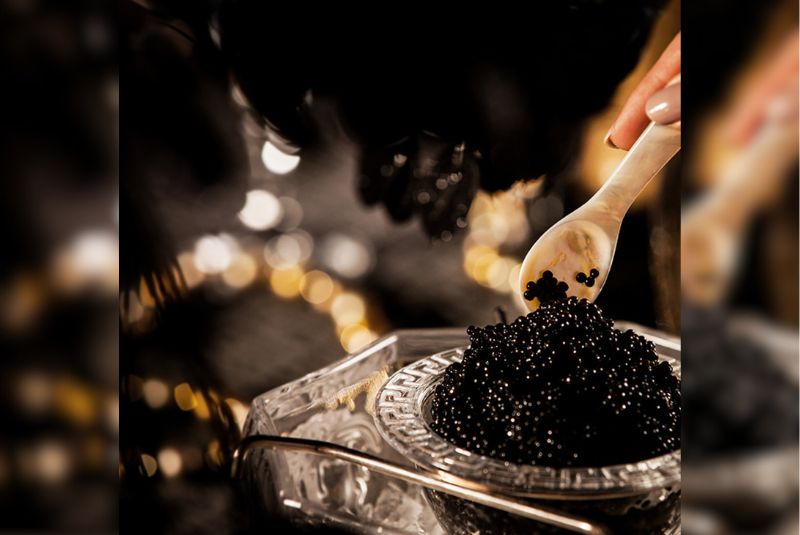
Iranian Caviar offers many benefits that contribute to overall health and well-being. Some of these benefits include:
- Supply of essential antioxidants: Caviar is rich in antioxidants, which help protect the body against free radicals and oxidative stress, promoting cellular health.
- Prevention of Alzheimer's and heart attacks: The omega-3 fatty acids found in Caviar have been linked to a reduced risk of Alzheimer's disease and heart attacks, as they support brain and heart health.
- Treatment of high blood pressure: The presence of omega-3 fatty acids in Caviar can help lower blood pressure levels, reducing the risk of hypertension.
- Increased body health: The abundance of nutrients in Caviar, including vitamins and minerals, supports overall body health and functioning.
- Fight against various viruses: Caviar contains compounds that have antiviral properties, helping to strengthen the immune system and defend against viral infections.
- Strengthened muscles and bones: The protein, calcium, and other minerals present in Caviar contribute to muscle and bone strength.
- Help in treating depression: Caviar's omega-3 fatty acids have been shown to have mood-enhancing properties, potentially aiding in the treatment of depression.
- Coping with stress and migraines: The nutrients in Caviar, such as omega-3 fatty acids and minerals, can help reduce stress and alleviate migraines.
- Beautify and strengthen the skin: The omega-3 fatty acids and antioxidants in Caviar promote healthy skin, enhancing its appearance and strength.
- Strengthened kidneys and liver: Caviar contains nutrients that support kidney and liver health, aiding in their proper functioning.
- Cancer prevention: Some studies suggest that the antioxidants and omega-3 fatty acids in Caviar may have anti-cancer properties, potentially reducing the risk of certain cancers.
Caviar also holds specific benefits for children, as it is rich in omega-3 fatty acids, vitamins A, D, K, B12, iodine, and the beneficial fatty acid DHA. These nutrients are crucial in children's growth, development, and intelligence.
| Suggestion: Top Iran Fruits - Seasonal Treats & Benefits
Iranian Caviar Price

The prices of Iranian Caviar fluctuate based on the type and quality of the Caviar. Here is a breakdown of the typical price ranges:
- Beluga Caviar: Beluga is the most expensive type of Iranian Caviar, with prices ranging from $100 to $500 per ounce. Its exquisite flavor and large, light-colored eggs contribute to its premium status.
- Ossetra Caviar: Osetra caviar is relatively less expensive, priced between $50 and $150 per ounce. Known for its nutty flavor and firm texture, it offers a more affordable option without compromising on quality.
- Sevruga Caviar: Sevruga caviar is the least expensive among the Iranian caviar varieties, costing around $30 to $75 per ounce. It is characterized by its smaller eggs and brings a unique taste to the table.
It is important to note that prices can also vary based on whether the Caviar is farm-raised or wild-caught. Overall, Iranian Caviar is considered a luxurious indulgence, with prices reflecting its exceptional quality and status as a gourmet delicacy.
| Discover: Top 23 Iranian Kebab
Iranian Caviar vs. Other Caviar
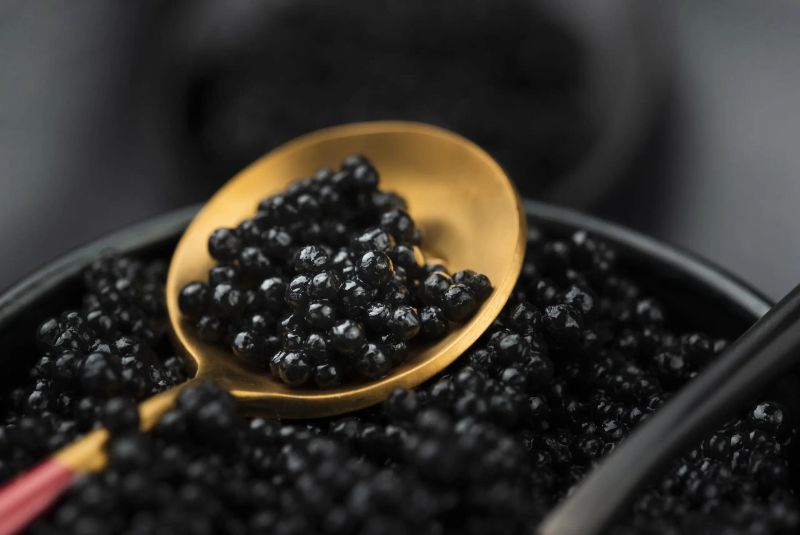
Iranian Caviar stands out from other varieties due to its distinct characteristics in flavor, texture, and egg size. Here are the key differences:
- Flavor: Iranian Caviar offers a slightly saltier taste compared to other caviar types, adding a delightful savory note to its profile.
- Texture: The eggs of Iranian Caviar have a firmer texture, providing a satisfying bite and enhancing the overall experience.
- Egg Size: Iranian Caviar typically features small to medium-sized eggs, contributing to a balanced mouthfeel and allowing for easy enjoyment.
- Shelf Life: Iranian Caviar often boasts a longer shelf life than other types, ensuring its freshness and making it a convenient choice for various culinary applications.
| Suggestion: Popular Persian Sweets You Must Try
What is the Best Caviar from Iran?
When it comes to the best Caviar in Iran, the Beluga variety takes the crown. Beluga caviar is highly coveted for its exceptional quality and unique flavor profile. Its large, light-colored eggs and distinct taste make it a true delicacy.
In addition to Beluga, two other popular types of Iranian Caviar are the Osetra and Sevruga. Both varieties are known for their nutty flavor and firm texture, offering a delightful culinary experience.
| Read more: Persian Bread - Different Types of Bread in Iran
Things to Consider When Buying Persian Caviar
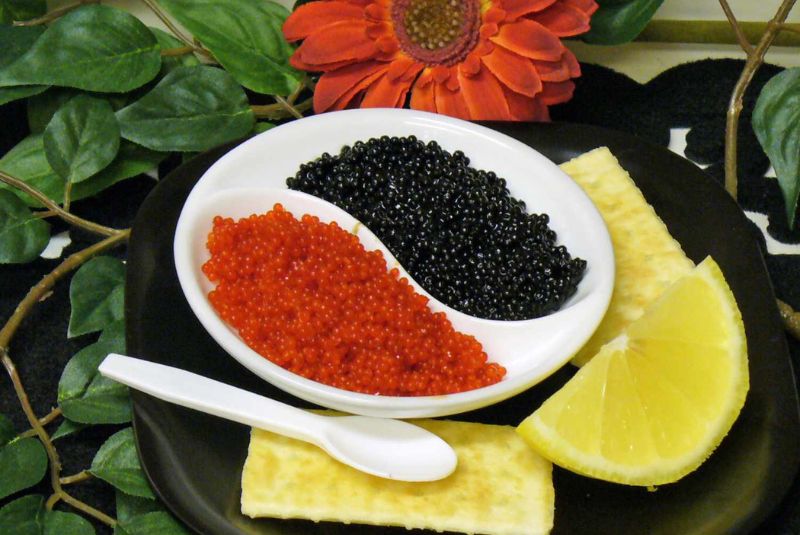
When purchasing Persian Caviar, there are several factors to consider to ensure a satisfying experience. Here are some key points to keep in mind:
- Quality and Freshness: Opt for Persian Caviar that is of high quality and fresh. Look for vacuum-sealed containers, as this helps preserve the flavor and texture. Check the packaging for any signs of damage or tampering.
- Storage Conditions: Persian Caviar should be stored in cold temperatures to maintain its freshness. Ensure that the vendor follows proper storage practices to prevent spoilage.
- Expiration Date: Always check the expiration date of the Persian Caviar before purchasing. Consuming Caviar past its expiration date may affect its taste and quality.
- Trusted Vendors: Purchase Persian Caviar from reputable vendors who can provide information about the origin and quality of the Caviar. Specialty stores, online retailers, and trusted supermarkets are reliable options.
| Also might be interesting: Top Iranian Beverages and Drinks
Bottom Line
Iranian Caviar truly stands out as one of the finest delicacies worldwide. The southern Caspian Sea provides the perfect environment for the production of exceptional Caviar, resulting in its unparalleled quality. The distinct flavor profiles, ranging from the buttery richness of Beluga to the nutty notes of Osetra and Sevruga, offer a diverse and captivating gastronomic experience. Whether indulging in the larger eggs for a pronounced burst of flavor or savoring the smaller ones for a delicate sensation, Iranian Caviar never fails to impress. Its reputation as the best Caviar on the planet is well-deserved, making it a must-try for any caviar connoisseur.
Share your story!
Comment below and let us know about your Experience.
Your story inspires others!


Comment
Leave a Comment